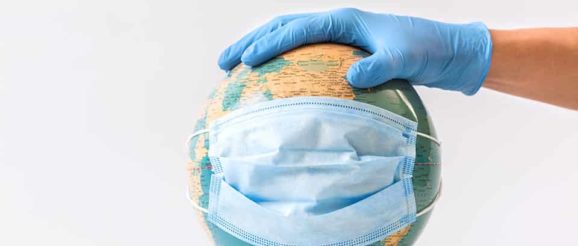Limitations And Innovation In A Covid-19 World > CEOWORLD magazine

The coronavirus pandemic has taken all of us by surprise and we found ourselves scrambling for supplies with no stockpile of ventilator equipment and an inadequate PPE supply to fall back on. To make things more difficult, the clinical severity of coronavirus is changing daily.
While it’s still too early to characterize the cardiovascular impact of COVID-19, we’ve seen it with other coronaviruses such as SARS and MERS, both linked to acute myocardial injury and rapid-onset heart failure. Recently published and anecdotal reports indicate that COVID-19 patients have developed acute onset heart failure, myocardial infarction, myocarditis, and cardiac arrest.
The proposed treatment regimen for COVID patients, specifically Hydroxychloroquine, are well known to cause cardiac arrhythmias. Studies conducted in patients with existing Long QT Syndrome and patients without Long QT prior to treatment were found to develop a lethal polymorphic ventricular tachycardia after the Hydroxychloroquine/Azithromycin drug combination was administered. The American College of Cardiology recommendations are that if this combination of medications are used, and AED will need to be readily available to save lives as these arrhythmias are life threatening and defibrillation is the only hope for survival.
So that we are not caught off guard in being able to treat the cardiac issues that are highly likely to present before this pandemic is over, we need to look far ahead and plan accordingly. We cannot afford to be timid about this. Careful assessment and preparation will save lives.
To put this in perspective, let’s assume this scenario: A hospital with 50 ICU beds has numerous patients who have tested positive for COVID-19. A nurse goes into a negative-pressure room to check the vitals of a patient who is COVID-19 positive. There is cardiovascular risk associated with this patient, in addition to other comorbid diseases common to patients who are COVID-19 positive. Suddenly, the patient goes into cardiac arrest…The nurse now has to leave the bedside, (and often the isolation room,) call a code blue, run down the hallway to get the crash cart with an AED, wait for a doctor to put on protective gear before coming into the room, or find a person who knows how to use the AED, wait for the AED trained personnel to put on the protective gear, roll the cart into the room, and prep the patient to receive the life-saving shock. Think about how much time has passed during this protocol. When the heart stops pumping blood to the brain and other vital organs, death is inevitable in a matter of a few short minutes. We must find ways to improve upon these methods and protocols.
The U.S. is the home of some of the world’s best innovation. Early development stage American companies such as CardioThrive, Inc. can offer solutions to improve products and protocols like the scenario just described. Now let’s assume a different scenario with the same 50 ICU bed hospital treating numerous patients who have tested positive for COVID-19. Let’s also assume that same nurse goes into the negative-pressure room to check the vitals of a patient with COVID-19 and also has other cardiovascular risk factors.
This time when the patient goes into cardiac arrest, the nurse calls a code blue, but rather than using the previously described protocol, instead the nurse pulls the handheld pocket-sized single use defibrillator off the wall, tears open the sterile packaging, pulls it apart and presses it on the chest of the patient. The hospital team will still be mobilized, but in this scenario, the device delivers the life-saving shock and the patient is back in normal sinus rhythm long before the team enters the room.
This scenario is likely to offer a far more favorable outcome for the patient. Afterward, the single use device is tossed into a recycle bin. There is no need for hospital staff time to be spent replenishing electrode pads or sterilizing the AED equipment on the crash cart. This saves valuable time and allows for a more efficient use of the hospital’s resources.
We are rapidly accumulating data to suggest that COVID-19 is directly attacking myocardial tissue and there will inevitably be an increase in myocardial injury and cardiac arrest. The current paradigm has a single, large, complex, difficult to clean and sterilize defibrillator shared among several rooms with patients in isolation. Use of a single crash cart device may make this lifesaving technology unavailable for the next patient for hours. Simultaneous cardiac arrests in two patient rooms may force staff to choose who receives the life-saving shock.
The increase in lethal myocardial injury associated with the direct effects of COVID-19 is inevitable. While there are workable protocols presently in place, we should look for more effective and efficient solutions. Early development stage companies such as CardioThrive face many challenges when bringing a new concept into focus. They are often overshadowed by larger corporations operating in the same medical device space.
But offering a better mousetrap isn’t enough. It takes careful planning, a solid strategy, strong leadership, perseverance, and lots and lots of money. The CEO leading the charge must be fearless in the face of rejection, confident in their convictions, and relentless in the pursuit of success. The innovations of today transform the outcomes of tomorrow.
Being the CEO of an early development stage medical device company has taught me a lot. Being the CEO of an early development stage medical device company during a global pandemic has taught me even more. The leaders who create innovation must learn to adapt to an ever changing world. You must look for opportunities that are less obvious, and sometimes even create new opportunities where there are none. Equivocation can be your worst enemy. Don’t be afraid to blaze your own trail. That, my friends, is American innovation at its very best.
Written by Shelley Savage. Have you read?
